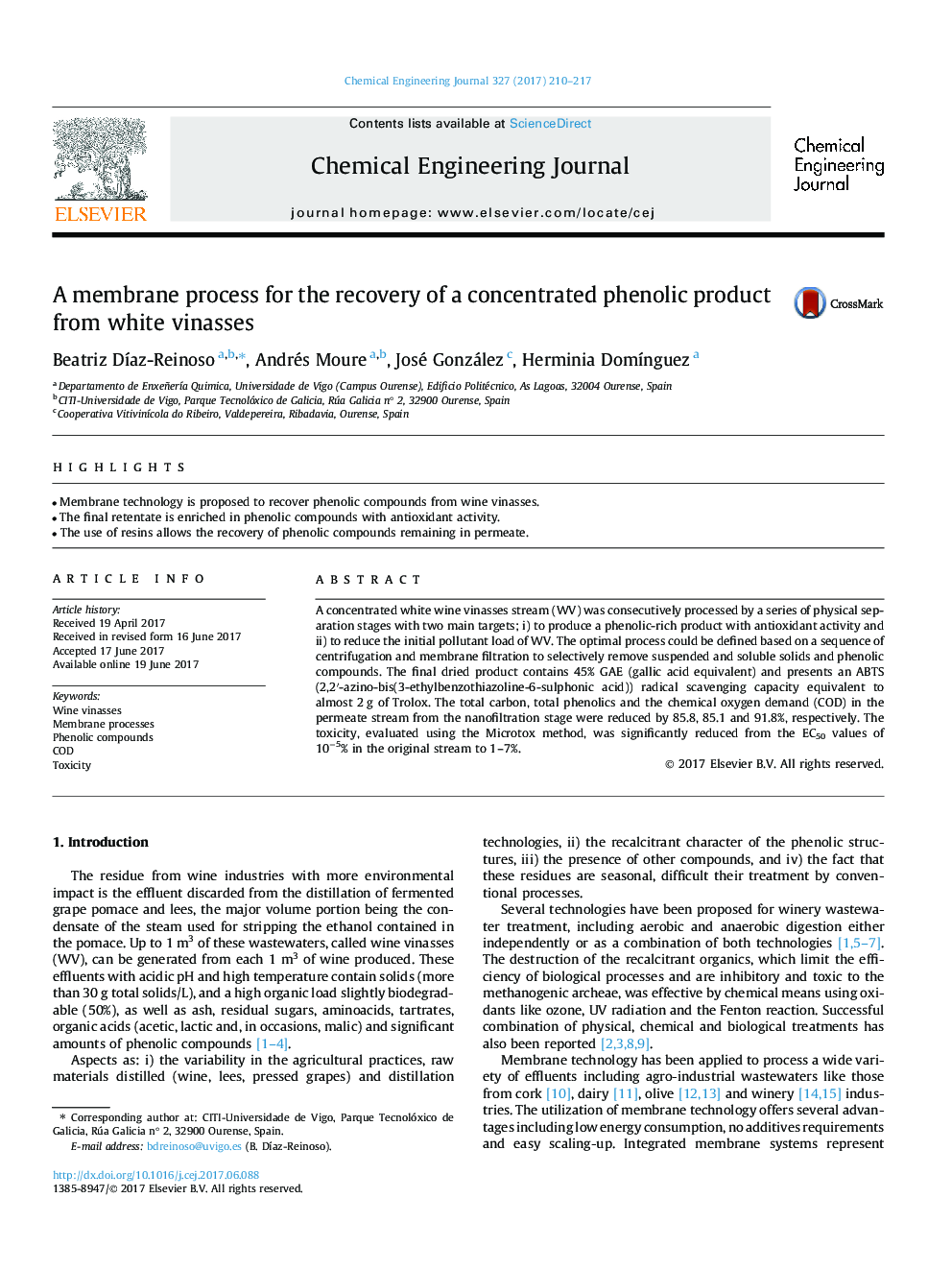| Article ID | Journal | Published Year | Pages | File Type |
|---|---|---|---|---|
| 6465021 | Chemical Engineering Journal | 2017 | 8 Pages |
â¢Membrane technology is proposed to recover phenolic compounds from wine vinasses.â¢The final retentate is enriched in phenolic compounds with antioxidant activity.â¢The use of resins allows the recovery of phenolic compounds remaining in permeate.
A concentrated white wine vinasses stream (WV) was consecutively processed by a series of physical separation stages with two main targets; i) to produce a phenolic-rich product with antioxidant activity and ii) to reduce the initial pollutant load of WV. The optimal process could be defined based on a sequence of centrifugation and membrane filtration to selectively remove suspended and soluble solids and phenolic compounds. The final dried product contains 45% GAE (gallic acid equivalent) and presents an ABTS (2,2â²-azino-bis(3-ethylbenzothiazoline-6-sulphonic acid)) radical scavenging capacity equivalent to almost 2Â g of Trolox. The total carbon, total phenolics and the chemical oxygen demand (COD) in the permeate stream from the nanofiltration stage were reduced by 85.8, 85.1 and 91.8%, respectively. The toxicity, evaluated using the Microtox method, was significantly reduced from the EC50 values of 10â5% in the original stream to 1-7%.
